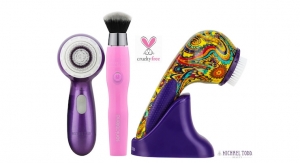12.12.17
As the thirst for high-end products continues to grow in Asia, a recent research report shows that Chinese millennials and Generation Z are set to become the leaders of luxury consumption over the next decade.
China’s millennials (born 1985 to 1995) and Generation Z (born after 1995) accounted for 34% of discretionary disposable income in 2015 but this is forecast to rise to 50% by 2025, according to the 2017 Chinese Luxury E-Commerce Whitebook report from Secoo, Asia's largest high-end e-commerce platform, and Tencent, the largest data company in China.
The report – which leverages Secoo's unique insight into customers and Tencent's expertise in big data – found that almost half (48%) of luxury shoppers in China were under 30.
Some 42% of Chinese millennials tend to shop online, compared with 34% of Generation X (born between mid 1960s and early 1980s). The average age is now 25 and, as the desire of young people to shop online shows no slowdown, this post-90s generation is also becoming another powerful group in luxury consumption.
This younger generation is highly active using online and social media channels, such as Weibo and WeChat – with digital media accounting for 76% of where they source the latest luxury information and insight, while traditional media only accounts for 24%.
Chinese consumers are stepping up their buying of minority brands – as opposed to famous and high-profile logos – as they seek more personalized and less mainstream experiences. For example, as Hip-Hop culture has gradually become more mainstream this has led to more young people embracing and becoming fans of brands, such as Supreme and Vetements.
The report says the U.S. remains the biggest market globally accounting for 22% of luxury sales, but China is a close second with 21%.
The report also found that growth in the Chinese luxury market is forecast to grow each year by 4% over the next five years to reach 617 billion RMB in 2021, ahead of growth in the worldwide market.
Key drivers behind this have included the Chinese government introducing policies to stimulate demand for domestic luxury consumption by reducing import duties on categories such as cosmetics, luggage and apparel.
Data for the report was collected between October 1, 2016 and September 30, 2017.
China’s millennials (born 1985 to 1995) and Generation Z (born after 1995) accounted for 34% of discretionary disposable income in 2015 but this is forecast to rise to 50% by 2025, according to the 2017 Chinese Luxury E-Commerce Whitebook report from Secoo, Asia's largest high-end e-commerce platform, and Tencent, the largest data company in China.
The report – which leverages Secoo's unique insight into customers and Tencent's expertise in big data – found that almost half (48%) of luxury shoppers in China were under 30.
Some 42% of Chinese millennials tend to shop online, compared with 34% of Generation X (born between mid 1960s and early 1980s). The average age is now 25 and, as the desire of young people to shop online shows no slowdown, this post-90s generation is also becoming another powerful group in luxury consumption.
This younger generation is highly active using online and social media channels, such as Weibo and WeChat – with digital media accounting for 76% of where they source the latest luxury information and insight, while traditional media only accounts for 24%.
Chinese consumers are stepping up their buying of minority brands – as opposed to famous and high-profile logos – as they seek more personalized and less mainstream experiences. For example, as Hip-Hop culture has gradually become more mainstream this has led to more young people embracing and becoming fans of brands, such as Supreme and Vetements.
The report says the U.S. remains the biggest market globally accounting for 22% of luxury sales, but China is a close second with 21%.
The report also found that growth in the Chinese luxury market is forecast to grow each year by 4% over the next five years to reach 617 billion RMB in 2021, ahead of growth in the worldwide market.
Key drivers behind this have included the Chinese government introducing policies to stimulate demand for domestic luxury consumption by reducing import duties on categories such as cosmetics, luggage and apparel.
Data for the report was collected between October 1, 2016 and September 30, 2017.
























